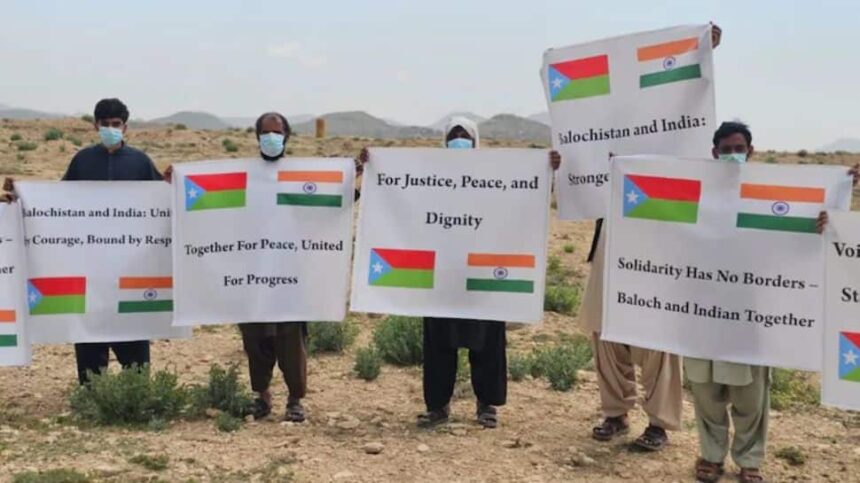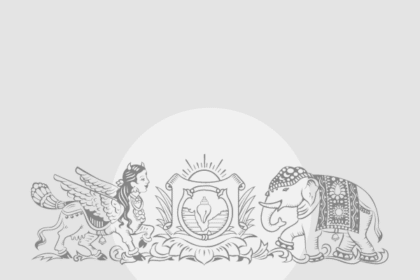Balochistan: A Land Divided, a People Ignored
Before 1947, Balochistan was part of British India, including territories directly governed by the British and princely states like Kalat, which was under British suzerainty. When the British left, Kalat declared independence on August 15, 1947, and signed a standstill agreement with Pakistan. However, in March 1948, the Pakistan Army forced the Khan of Kalat to sign an Instrument of Accession, which many Baloch leaders believe was done under pressure and without the people’s consent. This belief fuels the separatist movement today.
A Land Divided, a People Ignored
Balochistan is a vast, dry, and rugged region that stretches across Pakistan, Iran, and Afghanistan. Despite its rich resources in coal, gold, copper, gas, and minerals, it remains the least developed region in Pakistan. Roads, hospitals, schools, and job opportunities are scarce. The local people say they are being exploited—their land is taken, but nothing is returned.
Decades of Rebellion
Since being absorbed into Pakistan in 1948, the Baloch people have rebelled repeatedly: in 1948, in the 1950s, in the 1960s, a major uprising in the 1970s, and a renewed insurgency since 2003. Pakistan has always responded with military force, resulting in thousands of Baloch being arrested, tortured, or disappeared. Families still wait for missing loved ones.
The Rise of Armed Groups
Over time, several militant groups have formed, with the Balochistan Liberation Army (BLA) being the most prominent. Others include the Baloch Republican Army (BRA), Balochistan Liberation Front (BLF), and Baloch Republican Guards (BRG). These groups target Pakistani military posts, police stations, gas pipelines, Chinese workers involved in the China-Pakistan Economic Corridor (CPEC), and other targets.
The Hijacked Train That Shook Pakistan
On March 11, 2025, the BLA hijacked a train with 400 passengers in the hills between Quetta and Sibi. Women and children were released, but the militants demanded the release of jailed comrades. Pakistan refused and launched a 24-hour military operation. Officially, 21 civilians and four soldiers died, but unofficial reports suggest higher casualties. Soon after, Baloch groups launched retaliatory attacks across the region.
The Hijacked Train That Shook Pakistan
This incident showed that insurgents are now better equipped, more organized, and capable of confronting elite forces.
May 2025: The BLA’s Massive Attack
On May 10, 2025, Indian news agency ANI reported that the BLA had carried out a wave of 71 attacks across 51 locations in Balochistan. The targets included military bases, intelligence centers, police outposts, highways, and mineral transport convoys. According to the BLA, the goal was to test battlefield coordination, gain control of territory, and prepare for a larger war.
Message to India: “We’re Ready from the West”
On May 11, BLA spokesperson Jeeyand Baloch released a direct message to India. He accused Pakistan of using fake peace talks to fool the world and made a bold offer: "If India decides to take on Pakistan and finish its terrorist activities once and for all, BLA is ready to rise from the western front. We won’t just support India—we will fight alongside it."
Iran Joins the Fight
Iran has its own Baloch population in Sistan and Balochistan province. Militant groups like Jaish al-Adl have attacked Iranian forces. In December 2023, 11 Iranian policemen were killed in one such incident. In January 2024, Iran launched missile strikes into Pakistan’s Balochistan, claiming to target militants. Pakistan hit back the next day. This was one of the rare open military exchanges between the two neighbors, showing how dangerous the Baloch issue has become.
China’s Headache: CPEC in the Crosshairs
The China-Pakistan Economic Corridor (CPEC) is central to China’s Belt and Road Initiative. But it runs through Baloch lands, and locals were not consulted. Chinese citizens have already died in attacks: a suicide bombing at Karachi University and a bus bombing near the Dasu dam site. China is now reportedly considering using private military contractors to protect its projects in Pakistan.
Educated Rebels and Digital Warfare
The new face of the Baloch movement is educated, tech-savvy, and media smart. During the train hijacking, the BLA used social media to present their version of events globally. The movement is no longer just tribal. Middle-class Baloch youth are joining, giving the rebellion a modern edge.
People’s Protests Beyond the Guns
The Baloch struggle is not just about bullets. It’s also about basic rights—clean water, fuel, fishing, education, and justice. In 2023, Baloch women led mass protests after extrajudicial killings and custodial deaths. Locals say projects like Gwadar Port have displaced them and fear a demographic shift due to outsiders settling in the area.
A Broken Political System
Pakistan’s politics are deeply entangled with its military. After the army’s crackdown on former Prime Minister Imran Khan, many Pakistanis see the current government as a puppet regime. This makes any serious negotiation with Baloch leaders highly unlikely. Unless Pakistan shares power and resources, the anger in Balochistan will only intensify.
A Region on Edge, the World Must Watch
The situation in Balochistan is no longer just Pakistan’s problem. With China’s CPEC investments, Iran’s missile strikes, and a direct BLA message to India, this region is now a strategic flashpoint. The Baloch people have suffered silently for decades. Their voice is growing louder—not just with guns, but with demands for dignity, justice, and freedom. The world must listen. If it doesn’t, the next explosion might shake not just Pakistan, but all of South Asia.








